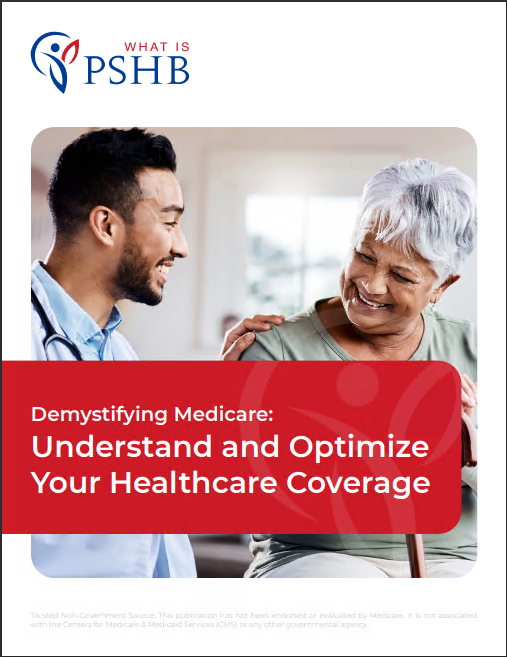Key Takeaways:
- The Postal Service Health Benefits (PSHB) Open Season runs from November 11, 2024, to December 9, 2024. This period is your opportunity to explore and secure the most appropriate plan before the PSHB officially launches on January 1, 2025.
- Understanding changes like Medicare Part B requirements and available comparison tools can simplify your transition and help you make informed choices.
The Big Shift: Transitioning to PSHB
The Postal Service Reform Act of 2022 introduced a substantial change for USPS employees and retirees: the shift from the Federal Employees Health Benefits (FEHB) program to the new Postal Service Health Benefits (PSHB) program. This transition officially begins on January 1, 2025. As we move through the PSHB Open Season (from November 11, 2024, to December 9, 2024), it’s crucial to know how to handle your enrollment smartly and efficiently.
What You Need to Know About PSHB Enrollment
Enrollment for the PSHB program has officially started, marking a significant period for USPS workers. If you’re wondering how this impacts your current coverage or what new steps you need to take, you’re not alone. Here’s a breakdown of the essentials:
- Automatic Transition: If you’re already enrolled in an FEHB plan, you’ll automatically be shifted to a similar PSHB plan. This seamless process aims to reduce administrative hassle, ensuring that employees and retirees don’t miss out on coverage.
- Review and Modify Your Plan: While the transition is automatic, you can still review and change your coverage during the Open Season window. This is a golden opportunity to make sure your healthcare needs align with your selected plan.
How Will PSHB Differ from FEHB?
One of the biggest questions surrounding this change is how PSHB plans will differ from the traditional FEHB coverage. Here’s what to expect:
Key Similarities
- Comprehensive Coverage: Just like with FEHB, the new PSHB program covers essential health services, ensuring continuity in care.
- Access to FEDVIP: The Federal Employees Dental and Vision Insurance Program (FEDVIP) remains unaffected, meaning you still have access to dental and vision coverage as before. This includes benefits like dental exams, cleanings, and prescription eyewear.
Key Differences
- Medicare Part B Integration: The requirement to enroll in Medicare Part B varies based on retirement timing. If you retire on or before January 1, 2025, you won’t need to enroll in Medicare Part B to maintain your PSHB plan. For those retiring after this date, Medicare Part B enrollment is necessary when eligible, typically at age 65.
- Prescription Drug Coverage: For Medicare-eligible individuals, PSHB plans will include Medicare Part D prescription drug coverage. This bundled approach simplifies drug benefits and could eliminate the need for separate Part D plans.
Navigating the Costs
Understanding the costs involved in your PSHB plan is essential for financial planning. While specific details about private plan premiums are off-limits, here’s what you should know about average expenses:
- Government Contribution: The government continues to cover a substantial portion of the total premium—about 72%.
- Employee Contribution: Your share remains at 28%, with variations depending on whether you opt for self-only, self-plus-one, or family coverage.
The Role of Medicare Part B
One of the more complex aspects of PSHB enrollment is understanding the role of Medicare Part B. If you’re nearing retirement or are already retired, pay close attention:
- Pre-2025 Retirees: If you retire on or before January 1, 2025, there is no requirement to enroll in Medicare Part B for PSHB eligibility.
- Post-2025 Retirees: Those retiring after January 1, 2025, must enroll in Medicare Part B when eligible to maintain their PSHB coverage. Keep in mind that all family members covered under your plan will need to enroll when eligible too.
- Exceptions: Certain exemptions apply, including individuals receiving care through the Department of Veterans Affairs (VA) or those living abroad.
Special Enrollment Period (SEP)
If you missed enrolling in Medicare Part B, the Special Enrollment Period (SEP) from April to September 2024 allowed USPS retirees to sign up without incurring late penalties. This was a one-time event and helped ensure retirees could transition smoothly into PSHB.
Cost Management Strategies
Switching to PSHB means understanding how to minimize your out-of-pocket expenses. Here are some tips:
- Leverage the OPM Comparison Tool: The Office of Personnel Management (OPM) provides a plan comparison tool, essential for evaluating different PSHB and FEDVIP options during the Open Season. Use this tool to match your healthcare needs and budget effectively.
- Maximize Medicare Benefits: For those who enroll in Medicare Part B, PSHB plans often offer perks like reimbursement of Part B premiums, waived deductibles, and lower costs on medical services. These benefits can lead to substantial savings in the long run.
Reviewing Your Plan Formulary
Prescription drug coverage can be a significant part of your healthcare expenses. Make sure to go through your plan’s formulary to check how your current medications are covered. This is especially important for retirees who will rely on Medicare Part D-integrated PSHB plans. Knowing your formulary ahead of time prevents surprises when filling prescriptions.
What Happens to Other Insurance Benefits?
Switching to PSHB will not impact your access to other federal benefits. This includes:
- FEDVIP: Dental and vision plans remain available, allowing for continuity in specialized coverage.
- FEGLI and FLTCIP: The Federal Employees’ Group Life Insurance and the Federal Long Term Care Insurance Program are unaffected by the transition to PSHB.
The Open Season Checklist
To handle your PSHB enrollment like a pro, consider the following checklist:
- Mark Your Calendar: Remember, the PSHB Open Season runs from November 11, 2024, to December 9, 2024. Missing this window could mean waiting another year to make significant changes.
- Use the Comparison Tool: Take advantage of the OPM comparison tool to align your plan with your healthcare priorities.
- Review Your Family’s Needs: Ensure any changes you make cater to the needs of your dependents, especially if they’ll be required to enroll in Medicare Part B later.
- Check Out Prescription Coverage: Verify that your plan’s formulary covers your current medications at a cost you can manage.
- Budget Accordingly: Be mindful of the employee share of premiums and plan for the year ahead.
Enroll Confidently with a Clear Strategy
Enrolling in the PSHB program doesn’t have to be complicated. With Open Season already underway, taking proactive steps like reviewing your options, understanding your cost obligations, and planning around Medicare requirements will help you manage the change seamlessly. Whether you’re currently an employee or retired, PSHB is here to provide continued, reliable health coverage without sacrificing key benefits.





